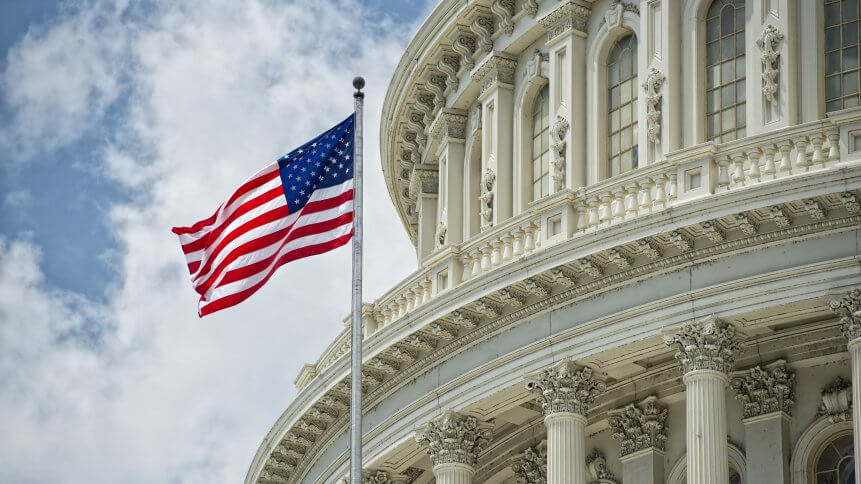Has the pandemic sparked GovTech innovation?

- Like every other, the public sector has leaned on technology to keep in operation amid the pandemic
- More than ever, governments and public bodies are realizing the need to embrace emerging technologies
While tasked with the job of keeping entire societies and economies running successfully, governments across the world have not been exempt from the same disruption organizations across every industry have faced.
Like other sectors – in the face of a rise in cybercrime and a shift to remote workforces – the public sector has embraced tech solutions to keep themselves afloat and protected. Digital transformation in this environment, and the tools and technologies that are being implemented is often referred to as GovTech – a phrase which “encompasses a much wider catalogue of actions aimed at making the public sector more innovative, agile and development-oriented” . The pandemic has highlighted that adoption and wholesale commitment to this kind of technology cannot come soon enough.
The demands of the pandemic have highlighted the need for public bodies to embrace technology that can support continuity, recovery and longer-term benefits in efficiency and convenience, both for citizens and workers alike. Speaking to Computer Weekly, Alexander de Carvalho, co-founder and chief investment officer of GovTech startup accelerator Public, said: “The world of GovTech has never been more exciting – whether you’re in health, education, justice or policing, et cetera – government will, can and is going to invest in uplifting, upskilling and supporting an economic return.”
De Carvalho highlighted the increasing involvement of startups in healthcare technology which, he said, will have a “dual benefit” of boosting the economy and advancing the government’s response for a future health crisis. “On top of that there’s been a loosening, or an improvement, of data sharing agreements [as part] of a more aggressive push for a truly interoperable state of play, which is very important. Again, a lot of it has been in the context of the Covid-19 response, but as much as we can keep some of this positive momentum in place post this response, the better,” he said.
IBM Think Gov 2020 earlier this month had industrial leaders join with federal, state, and local IT leaders to talk about how technology can help speed up the essential recovery and digital transformation projects. Illinois State CIO, Ron Guerrier, remarked that the pandemic had expedited the pace of innovation in the public sector, just as it has done so everywhere else.
“Every CIO out there, every technology professional, would agree that for years, most of us were talking about the digital revolution,” he said, adding that, amid the health crisis, “technology has become the — in some cases, the only — connection between the governments and the citizens we serve.”
Illinois State’s unemployment website went from 93,000 hits a week to 1.4 million a week as the coronavirus outbreak led to economic upheaval. The website “was not designed to take that much load, especially on the back end” meaning more creative ways to cope with the overflow were quickly implemented. “Innovation comes through necessity,” Guerrier said.
In Sonoma County, California, IT leaders have been hammering down organizational silos to enable more agile and nimble processes to support a public benefits program for vulnerable individuals.
“We have an integrated data hub, for example, that allows teams working with consumers to have access to information they wouldn’t ordinarily, or historically didn’t, have access to. That really was critical to being able to think about what the holistic needs are and to respond to those needs,” Director of Health Services Barbie Robinson said.
While state governments were driven to deploy dramatic changes to accommodate the mass shifts of communities to work remotely from homes, the fruits of earlier investments in digital transformation or enhancement were also visible. Nebraska State CIO Ed Tone shared that his department’s 2017 efforts in consolidating its IT resources and infrastructure paid off while supporting the mass transition from offices to working at home.
“We all use the same virtual private networks. We all use the same tool sets or video conferencing and things of that sort,” Tone stated; “We haven’t really been impacted very much and I really do attribute that to the consolidation efforts.”
This upgraded IT system has been a significant factor in the push to accommodate mass remote working with minimal disruption. Citizens were able to access services virtually and via content management systems, staff members were able to review paperwork electronically, without seeing a dip in productivity levels.
Interestingly, even immersive technology such as virtual reality (VR) and augmented reality (AR) was enlisted to combat the disruptionsof the pandemic. While the next-gen technology hasn’t been used to host town hall meetings, local authorities have adopted the technology to train workers.
Immersive technology has been used to help train law enforcement and other first responders who may face severe consequences if mistakes were made during on-the-job training. Instead, simulation from the next-gen technology helps prepare employees to acquire and strengthen the necessary skills without bearing the high risks for each training session. Immersive technology is also expected to reduce the need for employees to travel onsite, offering convenience, lower footfall into health facilities and safety for workers amid the global health crisis. TechHQ recently interviewed Erik Maltais, CEO of Immertec, a company that offers VR technology to help surgeons train remotely in real-time.
In the world of business, adoption of technology is crucial to remain competitive and to reach customers. In government and the public sector, digital transformation and embracing innovation is becoming crucial to running a country and for the quality of life of citizens.










